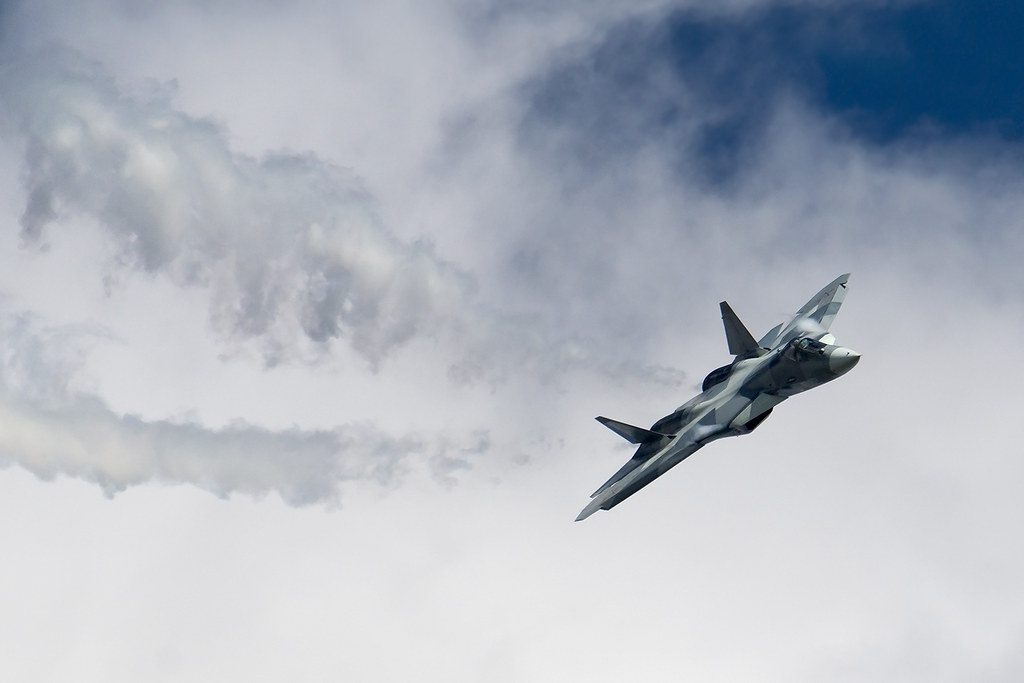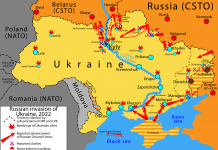
An analysis by retired Air Marshal Anil Chopra highlights the Indian Air Force’s position as the world’s fourth-largest and among the most potent. Despite participating in the Sukhoi/HAL Fifth Generation Fighter Aircraft (FGFA) initiative based on the Russian Su-57, India has not yet operationalized a fifth-generation fighter.
The FGFA program aimed to enhance the Su-57 with 43 improvements, focusing on superior sensors, enhanced networking capabilities, and advanced combat avionics. Originally conceptualized as a dual-seater featuring a pilot and a weapon systems operator, India withdrew from the program in 2018 but remains open to future participation.
In contrast, Russia has deployed its Su-57 ‘Felon’ jets in combat roles, notably in Syria and Ukraine, while China rapidly expands its fleet of J-20 ‘Mighty Dragon’ fighters, now numbering nearly 250 aircraft stationed along strategic areas such as the Line of Actual Control.
India pursues its indigenous fifth-generation fighter, the Advanced Medium Combat Aircraft (AMCA), yet maintains the Su-57 as a viable option. However, its acquisition of the Russian S-400 air defense system precludes India from acquiring the F-35. Contemplating temporary Su-57 acquisitions gains relevance when comparing capabilities against the J-20.
The Su-57, conceived in 1999 under the codename T-50, represents Russia’s first stealth aircraft, formally entering service in 2020 with 32 units produced. Designed for air superiority with multirole capabilities against surface and sea targets, it boasts stealth technology, high maneuverability, supersonic cruise capability without afterburners, advanced avionics, and significant payload capacity. Despite initial structural challenges during testing, the Su-57 incorporates advanced materials, including composites composing up to 26% of its structure.
Its distinctive design features a blended wing body, widely spaced engines, and movable horizontal and vertical stabilizers, enhancing aerodynamic performance. Extensive efforts to minimize radar cross-section and infrared signatures enhance stealth, although rear fuselage stealth lags behind some American counterparts. The aircraft’s Integrated Modular Avionics Combat Systems leverage fiber optic channels for information processing, bolstered by a sophisticated radar suite comprising main and side-looking radars strategically positioned for comprehensive coverage.
In summary, while India charts its course with the AMCA, considerations involving the Su-57 against contemporary platforms underscore strategic deliberations amid evolving regional dynamics.
The Su-57 is equipped with an array of sophisticated systems including night vision and tracking capabilities, infrared countermeasures, and missile launch detection sensors. It features a thermal camera for low-altitude operations and navigation, complemented by a robust targeting system. Defensive measures include the deployment of flares and radar decoys to thwart incoming missiles, while its advanced AI integration facilitates manned and unmanned teaming scenarios.
Propelled by two NPO Lyulka-Saturn AL-41F1 engines, the Su-57 generates 88.3 kN of thrust without afterburners and can achieve up to 142.2 kN with afterburners, peaking at 147.1 kN under emergency conditions. The aircraft’s thrust vector control (TVC), akin to the Su-30MKI, enhances its agility and maneuverability.
Weaponry is housed in two primary internal bays measuring approximately 4.4 meters long and 0.9 meters wide, supplemented by two side weapon bays beneath the fuselage near the wings. These bays accommodate up to four beyond-visual-range (BVR) R-37M missiles and two upgraded R-74 short-range missiles. Additionally, the main bays can carry various bombs and surface-attack missiles. When stealth requirements are relaxed, the Su-57 utilizes six external mounting points for additional armaments, including the Kh-47M2 Kinzhal missile.
With a large fuel capacity, the Su-57 boasts a range exceeding 1,500 km at high speeds, more than twice that of its predecessor, the Su-27, further extendable via an in-flight refueling probe.
Regarding production and deployment, Russia’s Ministry of Defense initially planned to evaluate ten Su-57s, aiming for an eventual fleet of 52 aircraft by 2020 and potentially 150-160 by 2025. Delays and adjustments to procurement schedules resulted in a contract for 76 aircraft with deliveries slated up to 2028. The commencement of serial production in July 2019, alongside the establishment of a new production line in 2022, indicates ongoing efforts to bolster the Su-57’s operational presence.
In operational deployments, Russia deployed Su-57s to the Khmeimim air base in Syria in 2018, where they operated alongside other aircraft types in combat missions, including the launch of Kh-59MK2 cruise missiles. The 23rd Guards Fighter Aviation Regiment in the Eastern Military District became the first operational unit to receive Su-57s starting in 2023, with full complement expected by 2025. Reports indicate the Su-57’s utilization in Ukrainian operations, demonstrating effectiveness in evading air defenses and engaging targets both in the air and on the ground, including reported successes against adversary aircraft.
Recent developments suggest an increasing operational tempo for the Su-57, evidenced by heightened activities over Ukrainian airspace and notable engagements, underscoring its evolving role in Russia’s air combat strategy.
Looking ahead, the Su-57 program encountered initial setbacks due to sanctions stemming from the Ukraine conflict, temporarily affecting semiconductor and high-tech imports from the European Union. Nevertheless, the United Aircraft Corporation (UAC) confirmed the successful maiden flight of the upgraded Su-57M on October 21, 2022. This variant will introduce the AL-51F-1 engine, delivering 107.9 kN of thrust under normal conditions and up to 167 kN with afterburners. Key enhancements include glass-fiber plastic components and a specially designed nozzle aimed at reducing radar and infrared signatures.
Development efforts are actively integrating the Okhotnik UCAV into a ‘loyal wingman’ role, facilitating collaborative operations with manned Su-57s. Concurrently, progress continues on a carrier-based iteration of the Su-57. Notably, experimental scenarios have involved Su-35s operating under the command and control of a Su-57, underscoring evolving tactics and interoperability within Russia’s air combat strategy.
Turning to China’s Chengdu J-20 “Mighty Dragon,” this advanced stealth fighter has evolved through several iterations: the original J-20A, enhanced J-20B with improved maneuverability, and the dual-seat J-20S variant. Commencing active service in February 2018, the J-20 represents China’s leap into operational stealth capability, with nearly 250 units produced thus far.
Characterized by a sleek aerodynamic design featuring advanced air intakes and movable surfaces optimized for supersonic flight and agility, the J-20 incorporates the Type 1475 (KLJ-5) radar system with over 1,800 modules. Reports suggest potential enhancements to this radar system, bolstering its sensor capabilities. The aircraft’s Distributed Aperture System integrates radar and infrared imagery, enhancing situational awareness despite potential radar detectability of its rear configurations.
Engine advancements from Russian AL-31FM2 to Chinese WS-10C engines with specialized nozzles underscore ongoing efforts to enhance stealth characteristics. Future adoption of the Shenyang WS-15 engines, projected to deliver 180 kN of thrust, promises further improvements in speed and maneuverability.
Armament-wise, the J-20 features a main bay for long-range air-to-air missiles (AAMs) such as the PL-12, PL-15, and PL-21, complemented by precision-guided munitions. Additional short-range AAMs are housed in side bays, with provisions for external hard points to support missions not requiring stealth. China’s production capacity for the J-20 aims to increase significantly, reflecting strategic ambitions to counterbalance U.S. F-35 deployments in the Western Pacific, with projections suggesting a potential fleet size of up to 1,000 aircraft by the early 2030s underlining China’s commitment to bolstering its aerial capabilities.
Recent reports from Chinese media highlight the development of the J-20S, an advanced variant of China’s flagship stealth fighter, tailored for roles in bombing, electronic warfare, and carrier-based strike missions. This configuration marks the J-20S as the world’s inaugural twin-seat stealth fighter, integrating a second seat to enhance mission management, facilitate co-pilot assistance in attacks, and oversee unmanned combat aerial vehicles (UCAVs) through sophisticated “loyal wingman” systems and advanced sensor suites. Concurrently, China advances projects like the AVIC Dark Sword and stealth Hongdu GJ-11 UCAVs to complement these capabilities.
Approximately ten brigades have transitioned to the new J-20 platform, now actively conducting routine patrols in the South China Sea. Notably, despite its technological advancements, the J-20 has yet to participate in international air shows or joint exercises beyond Chinese borders, though deployments along the India-China border underscore its regional strategic relevance.
The J-20’s emergence underscores China’s shift from reliance on Russian technology towards indigenous advancements in sensors and weaponry, positioning itself competitively against platforms like Russia’s Su-57, which has seen operational deployment in conflicts such as those in Syria and Ukraine. India, traditionally a key market for Russian military equipment, is concurrently developing its Advanced Medium Combat Aircraft (AMCA), wary of potential limitations associated with the Su-57 following its involvement in the Fifth Generation Fighter Aircraft (FGFA) project. India’s strategic calculus may pivot based on developments in neighboring Pakistan’s acquisition of fifth-generation capabilities and the pace of the AMCA’s development.
Market dynamics suggest Chinese and Russian aircraft will vie for affordability-driven opportunities in regions such as Africa, West Asia, and Southeast Asia. While Russia secures deals like Algeria’s acquisition of Su-57 fighters as part of broader military procurement packages, China expands its J-20 fleet, with regional interest seen in platforms like Pakistan’s consideration of the Chinese FC-31 stealth fighter. India, navigating developmental timelines for the AMCA, weighs interim solutions, with considerations spanning potential acquisitions of the Su-57 or exploring newer offerings like Russia’s Su-75 Checkmate, as the quest for strategic aerial superiority continues amid evolving global defense landscapes.




